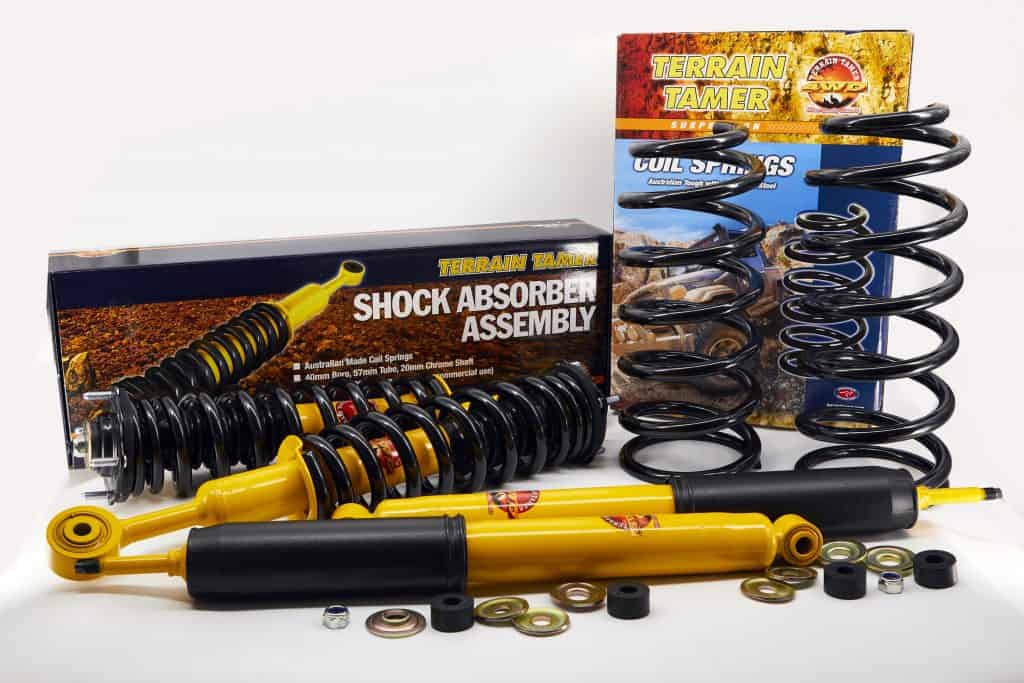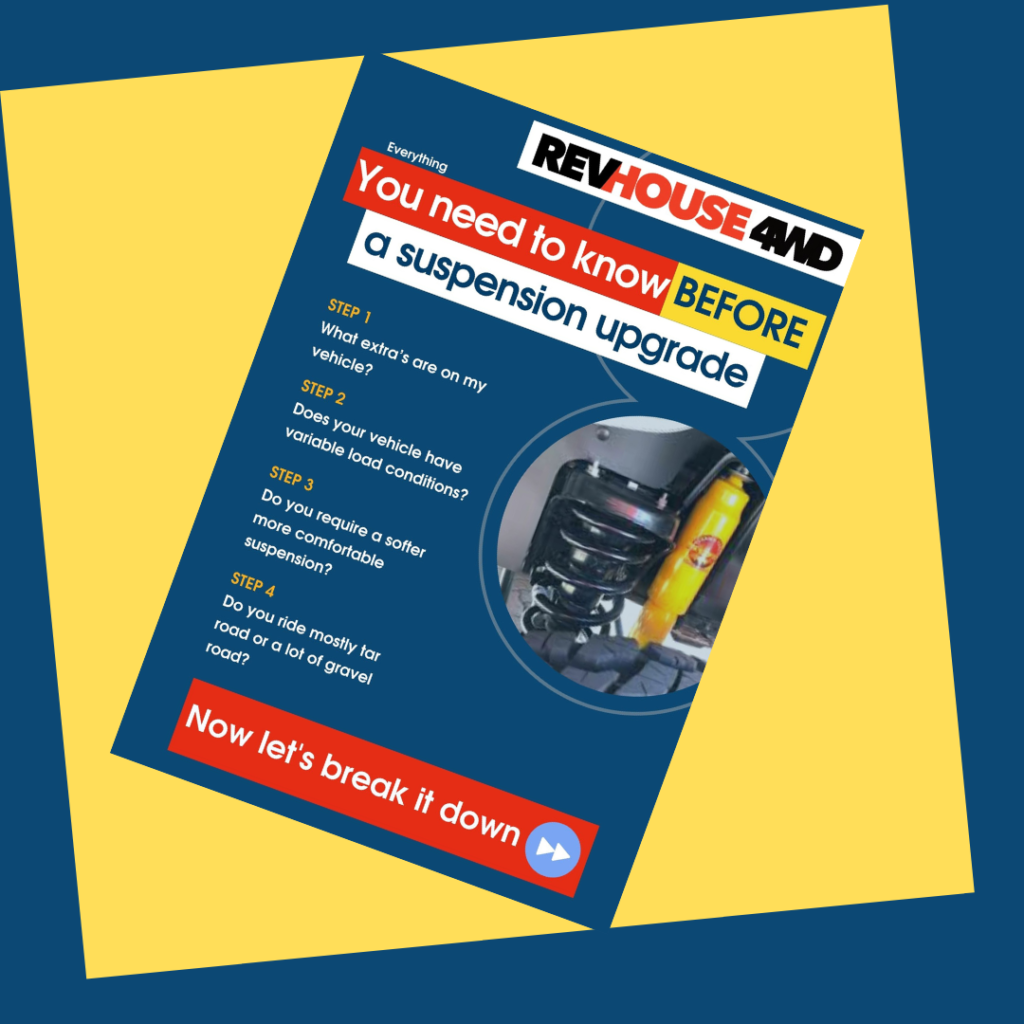
- The weight on your vehicle affects your suspension choice.
Before deciding on a certain suspension upgrade you need to look at what the constant load (things that are always on or in the vehilce over and above the standard weight of the vehicle) is on your vehicle, per axle, front and back to determine what constant load spring rate is needed. Springs have different ratings for different constant loads on vehicles. To get the constant load rating that you need on your springs you add up the approx wieght of all the extras on your vehicle. For expample, some of the constant load ratings on Terrain Tamer springs are 300-500kgs or a 500 – 700kgs constant load.
Why is important to choose the correct springs?
If you over spring your vehicle the ride will be very uncomfortable and hard and if you under spring it the vehicle will sag and you will hit your bump stops frequently, which is also very uncomfortable. Your vehicle could also be unstable on the road and unsafe because the tyres will not make proper contact with the road surface if it is under sprung.
Examples of common extras
Front – Do you have steel/aluminium aftermarket bullbar, a winch with steel or synthetic rope. Duel battery system under the bonnet. Anything on the front of the roof.
Back – Canopy, roof rack, tent, spare wheel (s), jerry cans, extra water tank, steel replacemnet bumper with or without spare wheel swing out arms. Drawers systems, fridge.
- Do you need a full suspension upgrade or will a partial upgrade be sufficient?
You may not need to do a full suspension upgrade, a partial suspension upgrade may be sufficient for your needs, so before you go all out, consider these points.
Partial upgrades are recommended if only one or two elements of your suspension kits need replacing. For example, if your springs have gone flat or you need to have uprated coil for the new load you are carrying. A partial suspension upgrade can also include only a front or rear upgrade depending the weight distribution of your vehicle. If you do a partial upgrade you have to make sure that the components match in compressed and extended length and travel.
If your standard springs are up to spec your vehicle weight but just your shocks need replacing then you need to look at if the vehicle has a lift. If yes, how much? To match the shock compressed length and extended length to the travel of the spring. Otherwise you could end up bottoming out the shock.
- Suspension lift.
Lifted vehicles with independent front suspension have a lift limit which varies from vehicle to vehicle. The limiting factor to how much is a safe lift has to do with the angle at which the cv joint constantly runs. The greater the angle on the cv, the more wear it will have which causes the cv’s to become unreliable. With some vehicles you can install a front diff drop kit to lower the diff due bring the angles of the cv’s back within oe spec. Terrain Tamer do stock diff drop kits for most vehicles.
All suspension lifts have an effect on your wheel alignment – ie the caster and cambre and the pinion angle. For independent front suspension vehicles the correct after market, heavy duty, upper control arms are designed to correct the cambre. Terrain Tamer also have caster correction bushes which correct the caster and correct the pinion angle.

Need some extra help choosing your next suspension? Click the link below to get the suspension upgrade checklist that I personally use.


